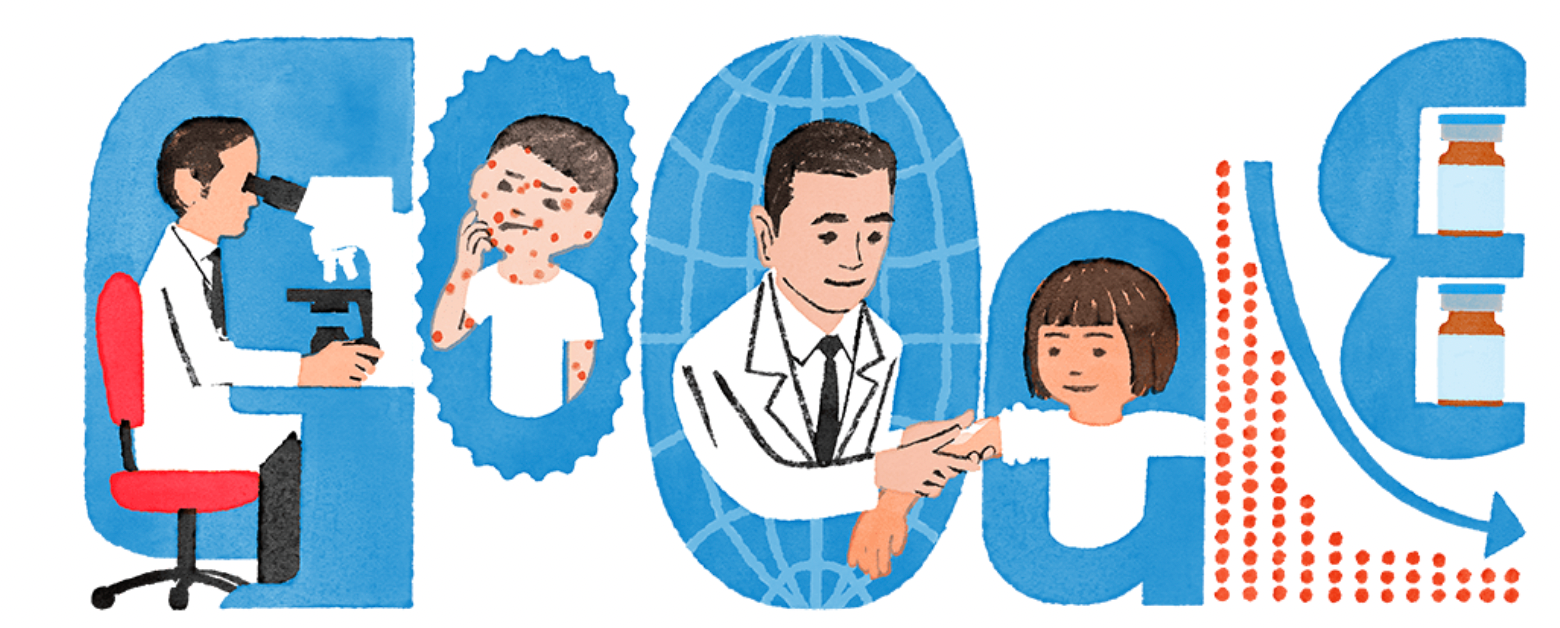Today’s Google Doodle Honors Dr. Michiaki Takahashi, Inventor of the Chickenpox Vaccine
The varicella zoster (chickenpox) virus has been essentially eradicated thanks to the vaccine developed by Japanese virologist Dr. Michiaki Takahashi, who would have been 94 years old today.

If you happened to use Google today (and who hasn’t?), you may have noticed that today’s “doodle” features infectious disease researcher Michiaki Takahashi, MD.
A Japanese virologist best known for inventing the first chickenpox vaccine, Takahashi was featured on the search giant’s homepage because today would have been his 94th birthday.
Takahashi (February 17, 1928-December 16, 2013) became interested in developing a cure after his son, Teruyuki, became infected with the chickenpox-causing varicella zoster virus. In an interview almost 50 years later, Takahashi noted his 3-year-old son had come in contact with a girl who had a “blister-like rash” on her head.
Takahashi recognized the symptoms of varicella zoster virus (VZV) and knew there was no treatment. Shortly after, his son developed severe symptoms, including a high fever and vesicles all over his body. Takashi recalled he and his wife had to watch his son all day and night as his condition rapidly worsened and he had trouble breathing.
Though his son eventually recovered, Takahashi had a newfound awareness of varicella, which at the time was considered to cause only “mild” illness. While studying in the US, Takahashi began working to develop a chickenpox vaccine in 1971.
Takahashi developed the “Oka” chickenpox vaccine by producing a live, but weakened, strain of varicella zoster virus. Takahashi used VZV from the vesicula fluid of a child with a typical case of chickenpox, whose family name was Oka.
Takahashi cultivated the v-Oka strain virus in animal and human tissue and worked alongside Merck, Sharp & Dohme to develop the final product. The arduous vaccine research was completed in 1973, and it was certified by the World Health Organization (WHO) as the most effective chickenpox vaccine in 1984.
The vaccine was submitted to the US Food and Drug Administration (FDA) in 1990 and was approved for use in 1995. Today, it is available in the US under the trade name Varivax. If administered within 5 days of chickenpox exposure, the vaccine can prevent most cases of disease.
Chickenpox caused an average of 4 million infections in the US well into the early 1990s. The US Centers for Disease Control and Prevention (CDC) estimates the chickenpox vaccine prevents over 3.5 million infections, 9000 hospitalizations, and 100 deaths each year.
VZV enters the body via the respiratory system, incubating for an average of 14 days before targeting the skin and peripheral nerve. The virus is most contagious in the 1-2 days before a rash appears.
Besides causing 250-500 itchy blisters all over the body, infection with varicella zoster virus can result in encephalitis, pneumonia, or bronchitis. Even once the clinical symptoms of chickenpox have cleared, VZV remains dormant in the nervous system.
The chicken pox vaccine laid the groundwork for other inoculations as well, such as shingles. In approximately 1 in 3 people who contract chickenpox, the virus reactivates later in life to produce shingles (herpes zoster).
The CDC recommends at least 1 dose of the vaccine for young children between 12-15 months old, though 2 doses are considered to be more effective. In 2006, the CDC’s Advisory Committee on Immunization Practices (ACIP) recommended all children receive a second dose of the vaccine before entering school to maintain high levels of immunity.
Notably, if at least 80% of the population does not get vaccinated against chicken pox, the WHO says more people may develop the virus at an older age and have worse outcomes. Once 80% or more of the population is vaccinated, however, the unvaccinated people will reap the benefits of herd immunity. Current estimates place the US at about 90% vaccination coverage in the recommended population.
Receiving the vaccine is essential, because even if infection is not fatal, every case of chickenpox places an undue burden on healthcare staff and facilities. The CDC notes that most healthy adults who die of chickenpox contracted the virus from their unvaccinated children.
Takahashi was born at Higashisumiyoshi-ku, Osaka, Japan, on February 17, 1928. In 1954, he earned his MD from the Osaka University Medical School, and completed a medical science graduate poxvirus virology degree in 1959. Takashi came to the US to study at Baylor College of Medicine and the Fels Research Institute of Temple University from 1963-1965.
Today’s Google doodle was drawn by Tokyo-based guest artist Tatsuro Kiuchi
